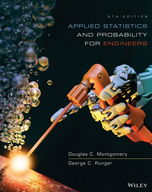Solution Found!
In Exercise 9-5, calculate the probability of a type II
Chapter 9, Problem 8E(choose chapter or problem)
In Exercise 9-5, calculate the probability of a type II error if the true mean elongation is 11.5 kilograms and
(a) \(\alpha=0.05\) and \(n=4\)
(b) \(\alpha=0.05\) and \(n=16\)
(c) Compare the values of \(\beta\) calculated in the previous parts. What conclusion can you draw?
Questions & Answers
QUESTION:
In Exercise 9-5, calculate the probability of a type II error if the true mean elongation is 11.5 kilograms and
(a) \(\alpha=0.05\) and \(n=4\)
(b) \(\alpha=0.05\) and \(n=16\)
(c) Compare the values of \(\beta\) calculated in the previous parts. What conclusion can you draw?
ANSWER:Step 1 of 4
In Exercise 9-5
Mean, \(\mu=12 \text { kilograms }\)
Standard deviation, \(\sigma=0.5 \text { kilograms }\)
The true mean elongation = 11.5
The hypothesis:
\(\begin{array}{l} H_{0}: \mu=11.5 \text { kilogram } \\ H_{1}: \mu<11.5 \text { kilogram } \end{array}\)
